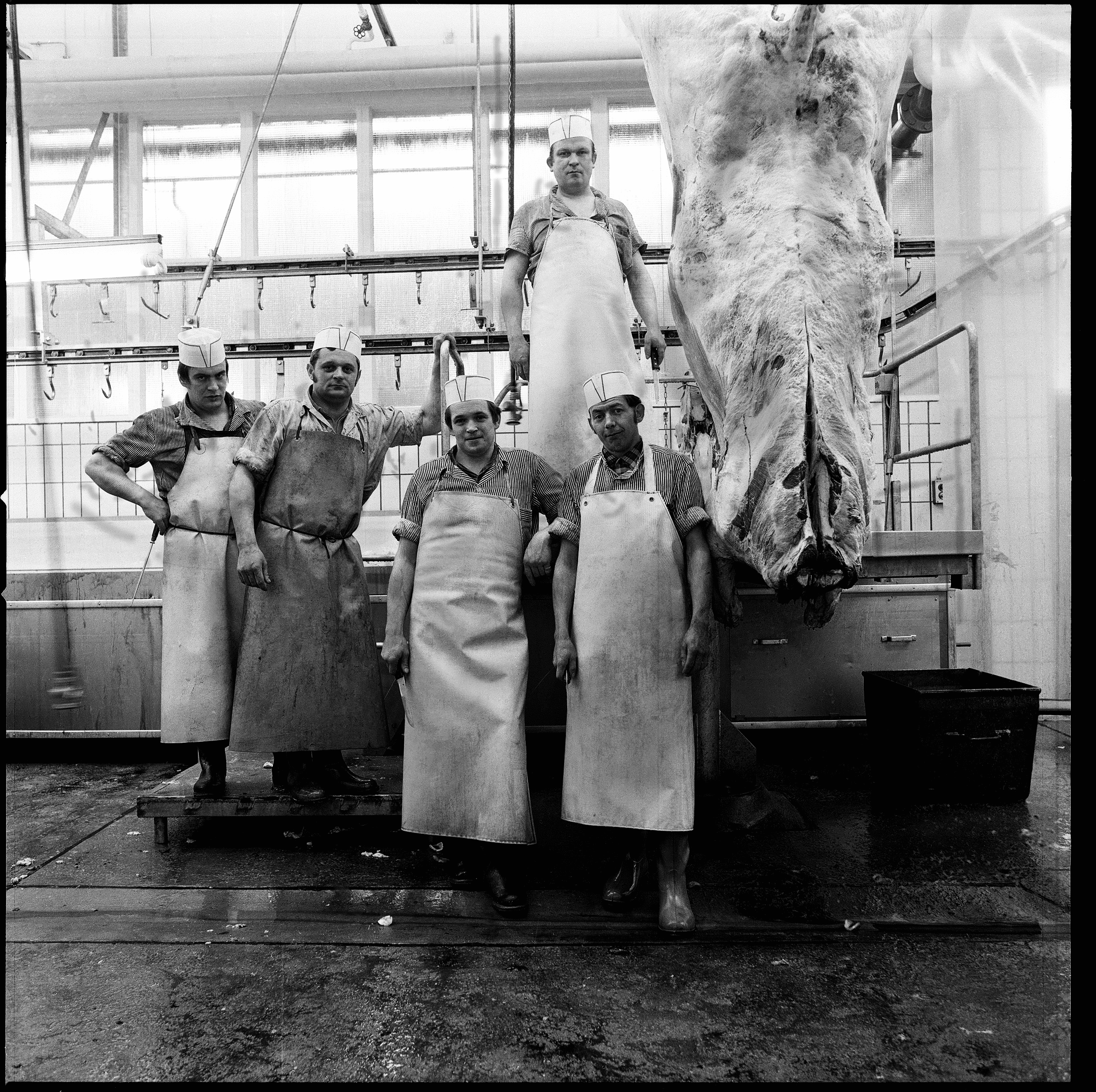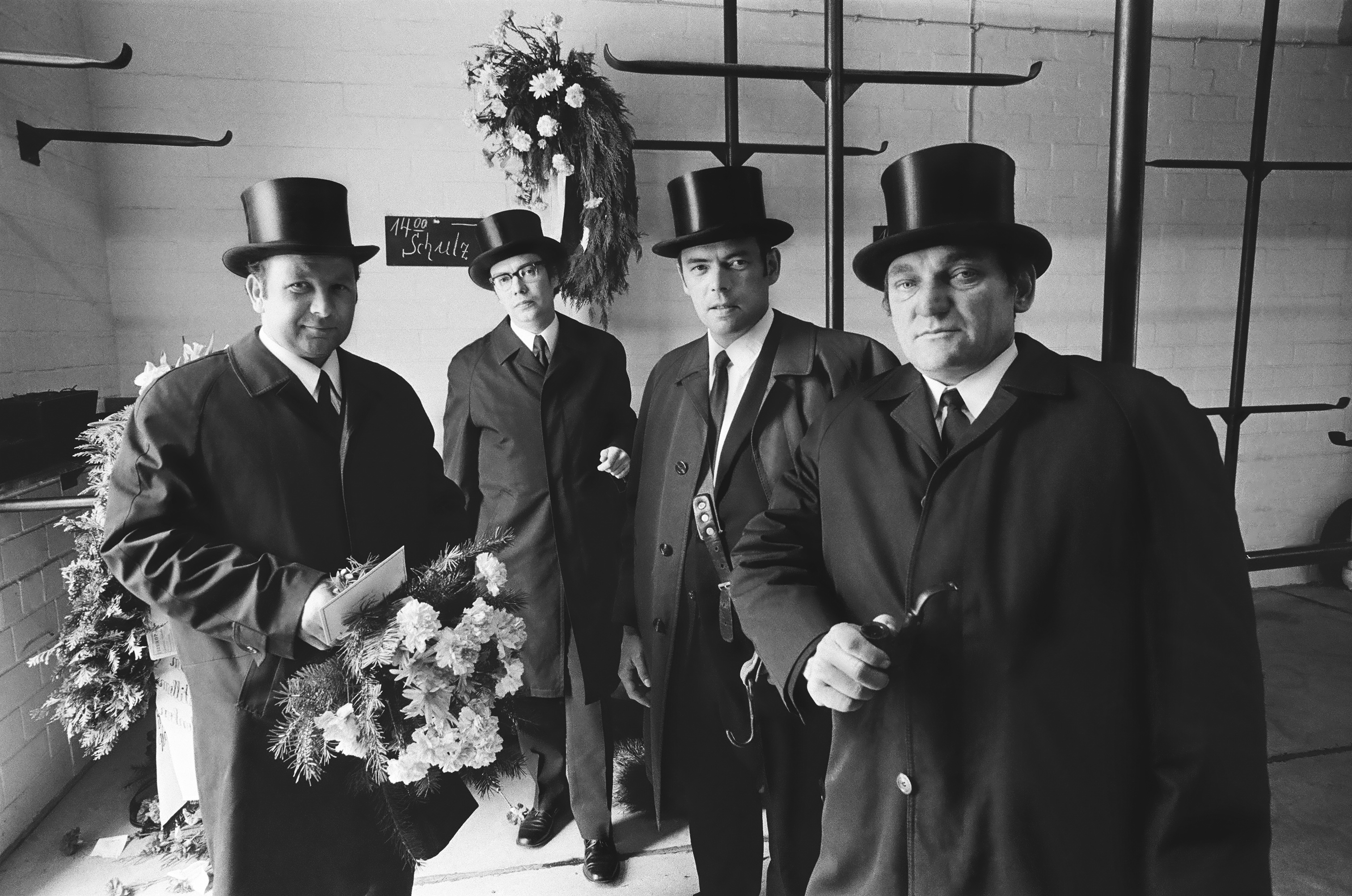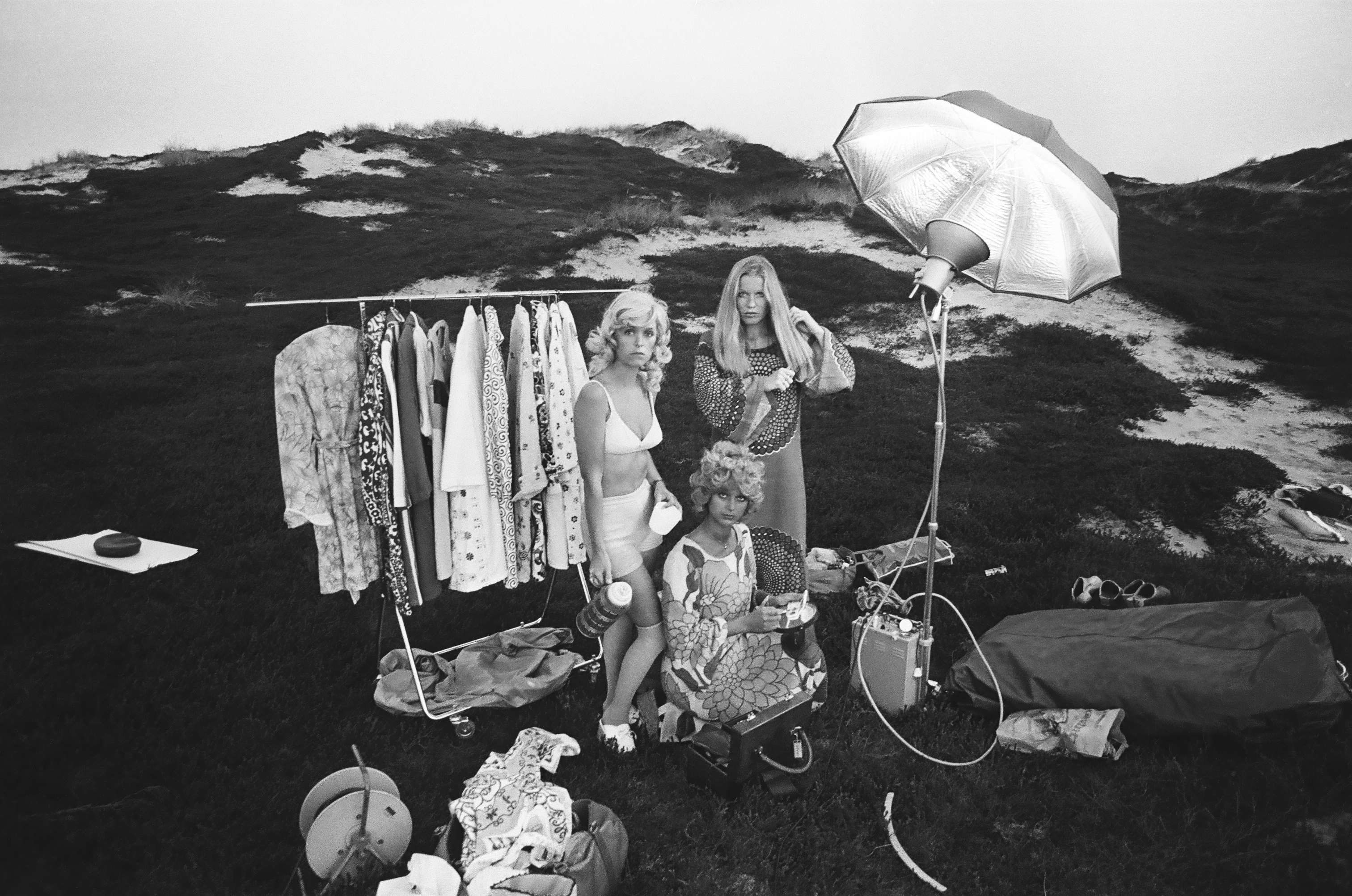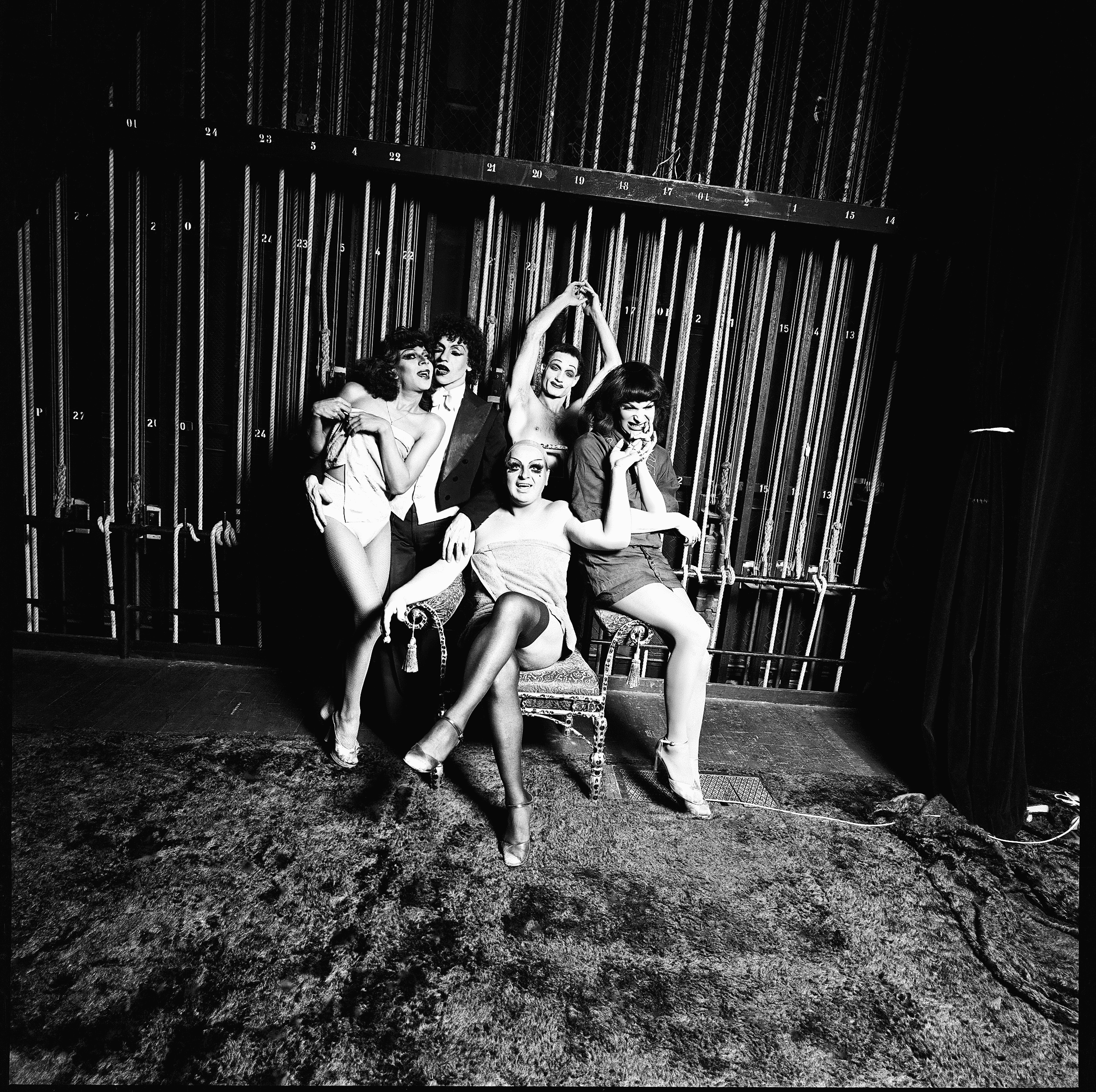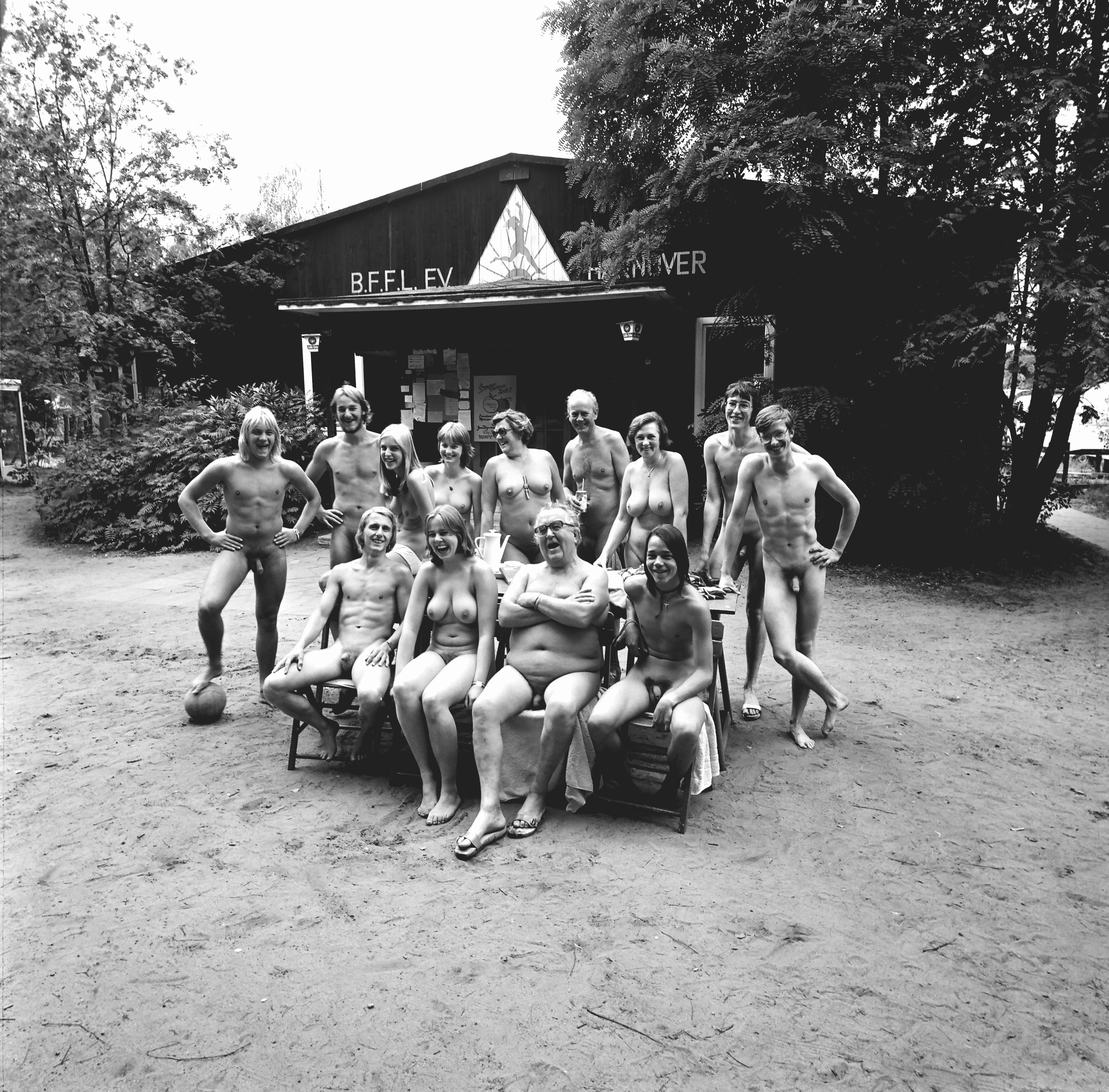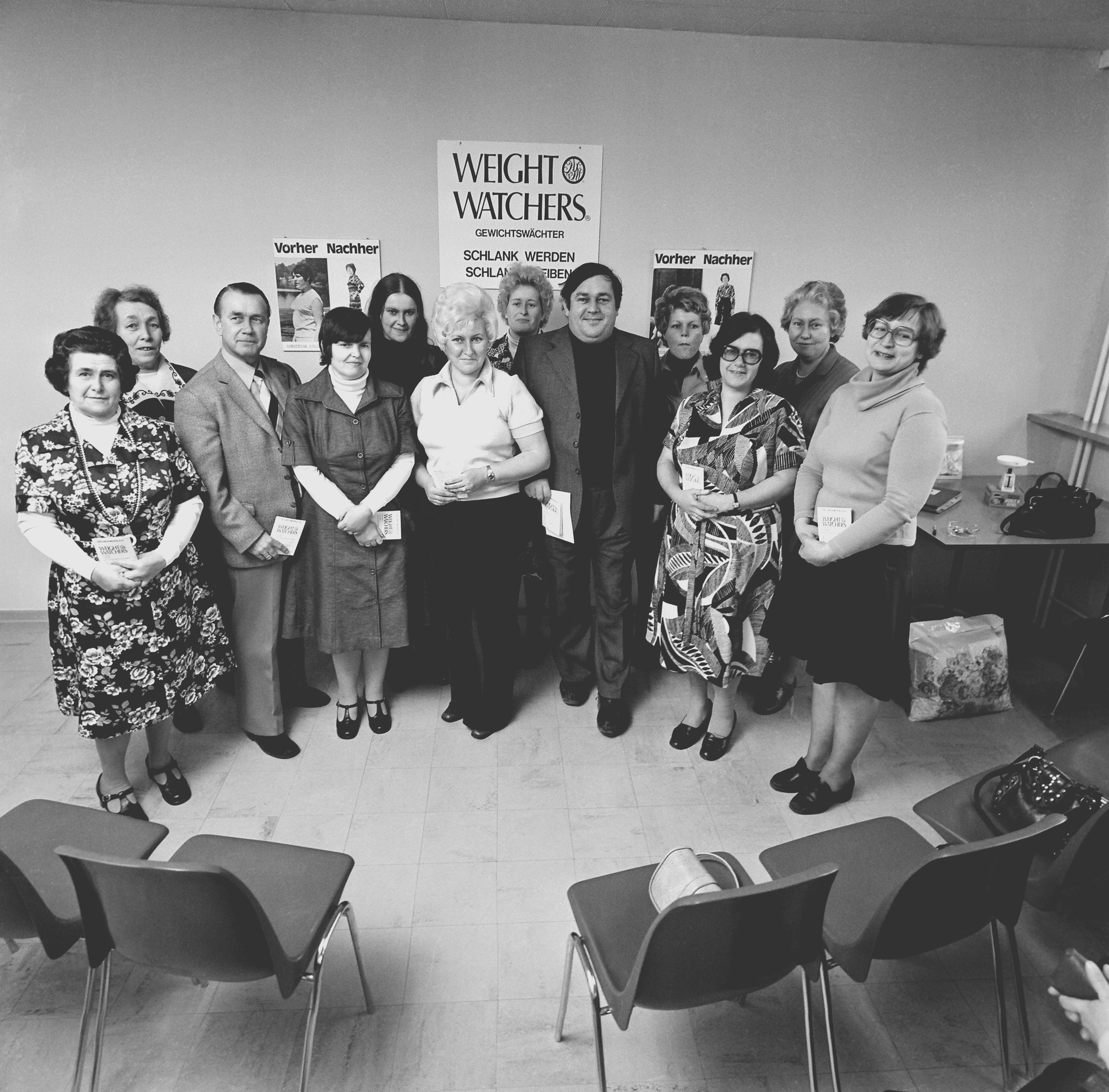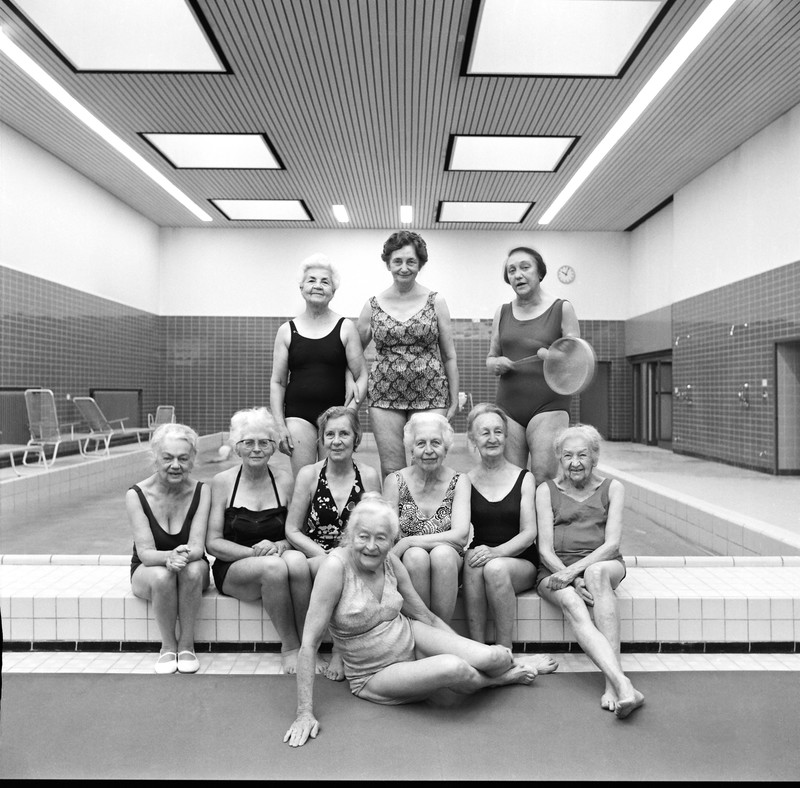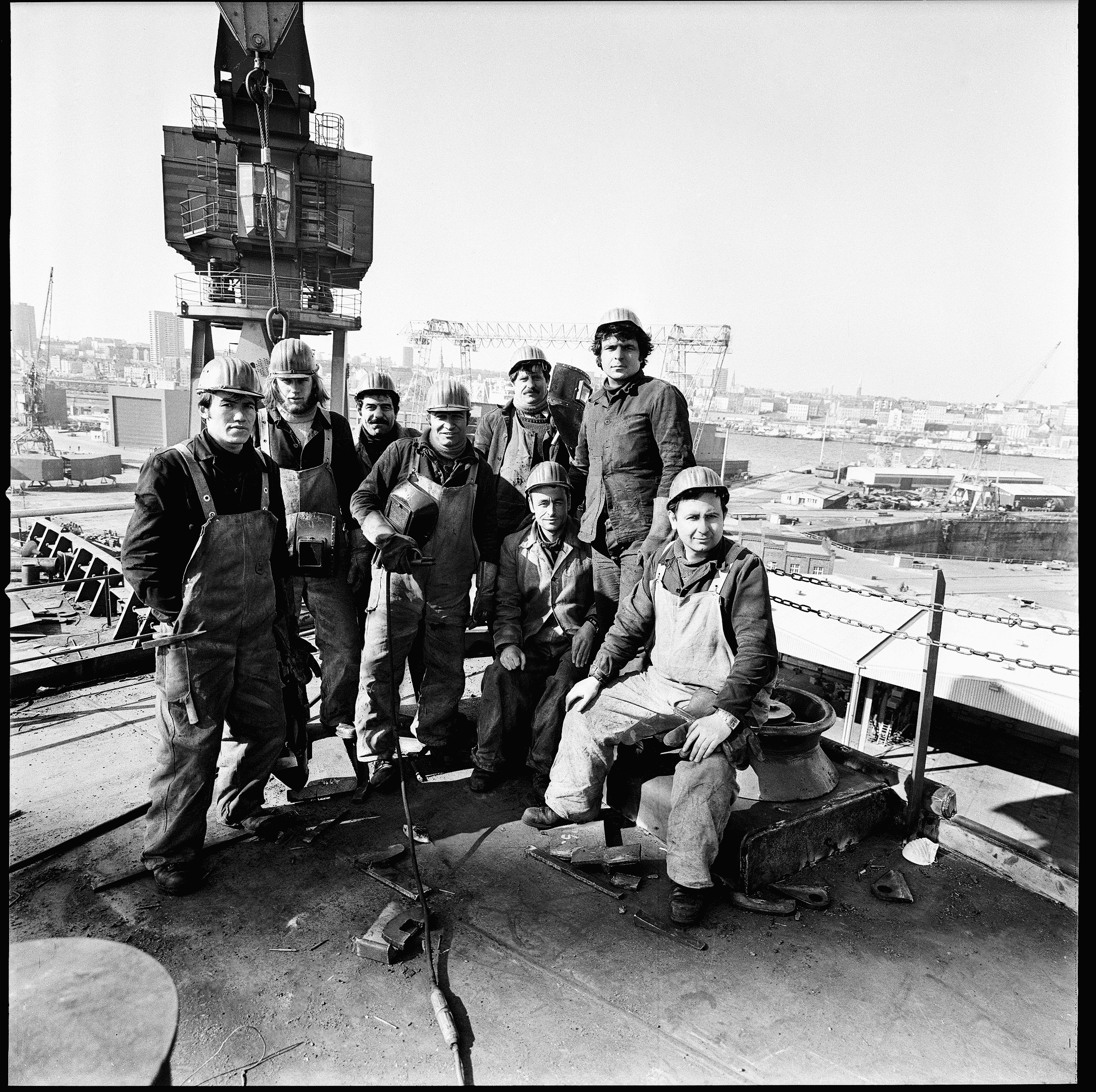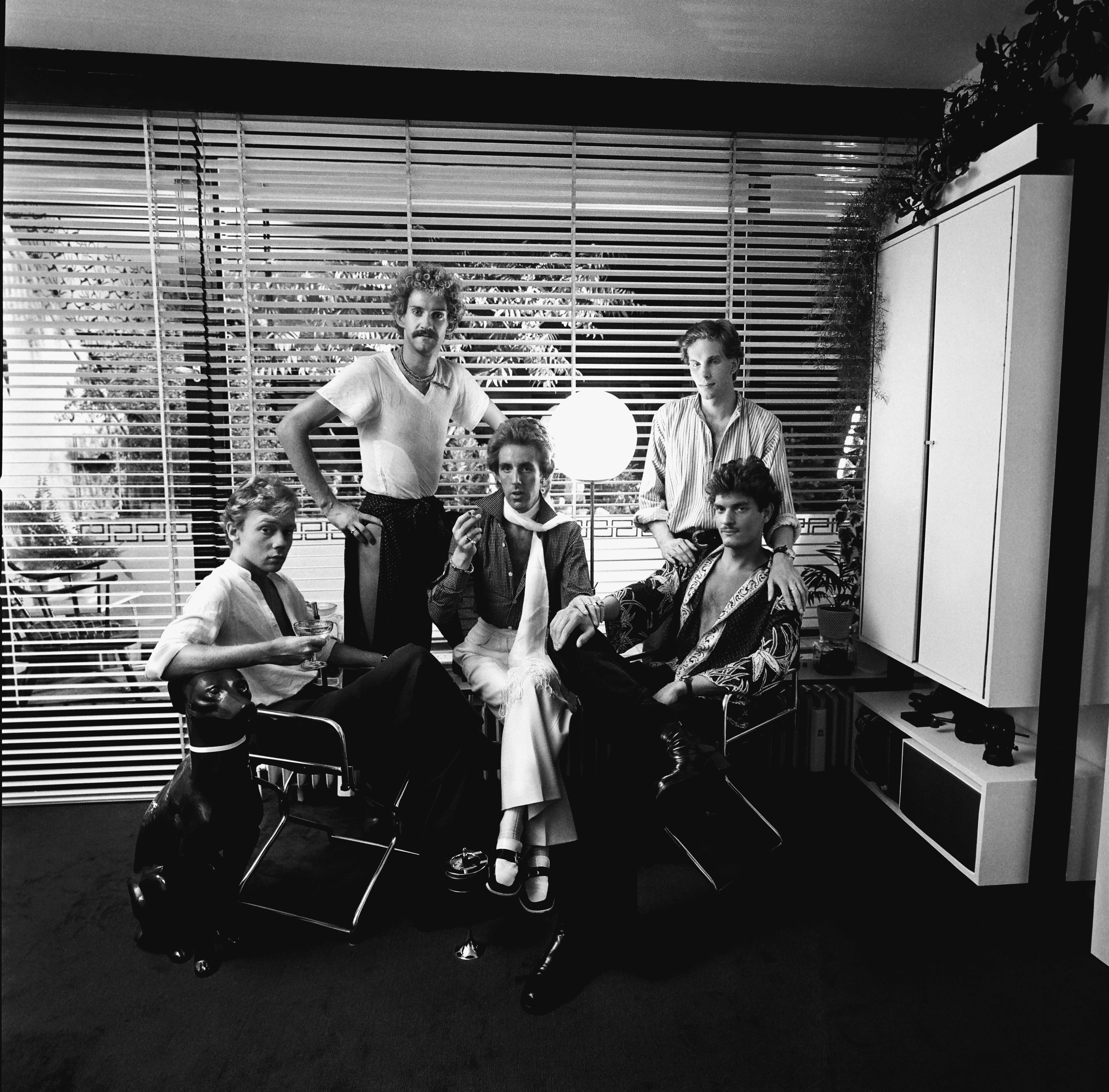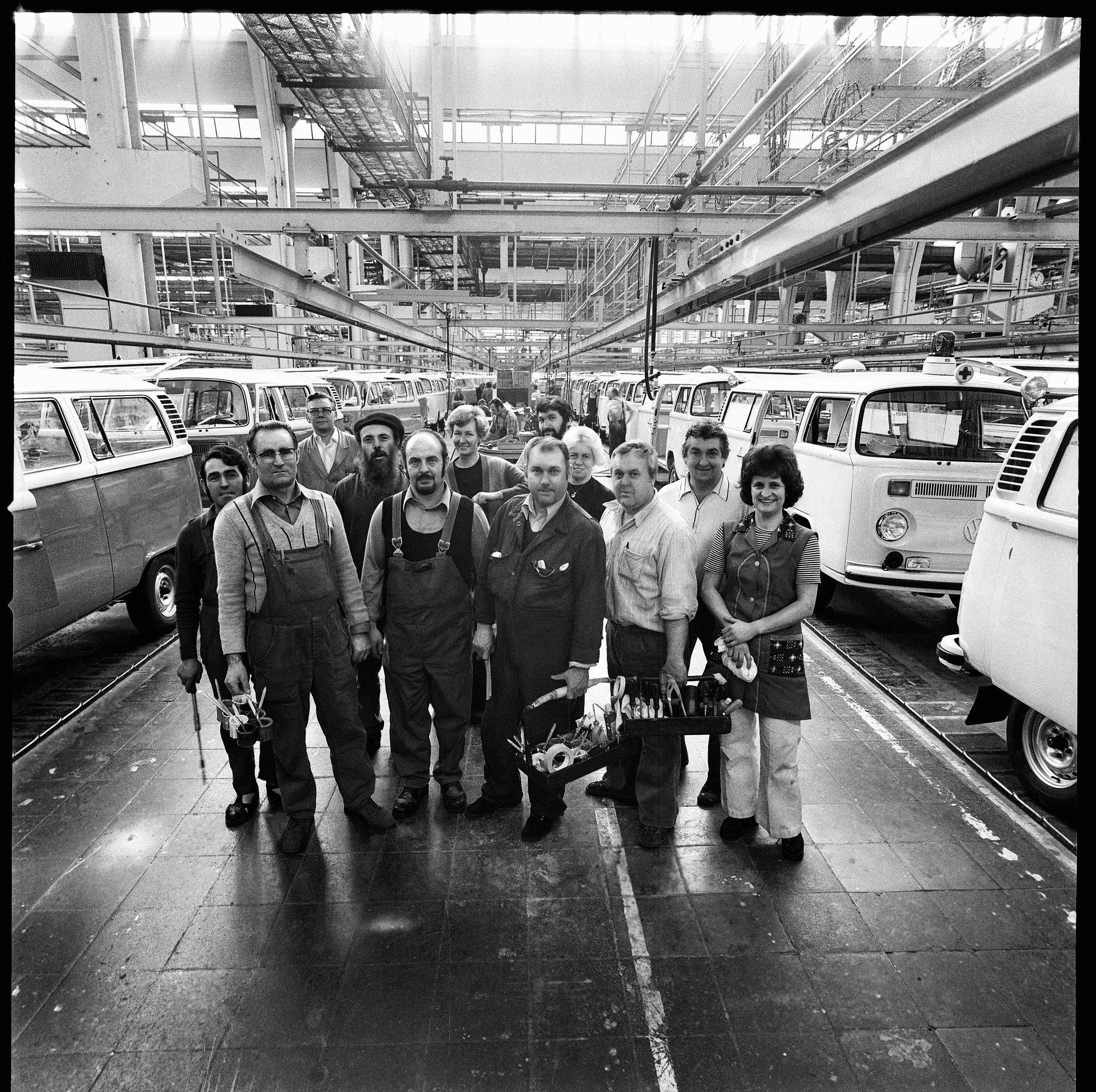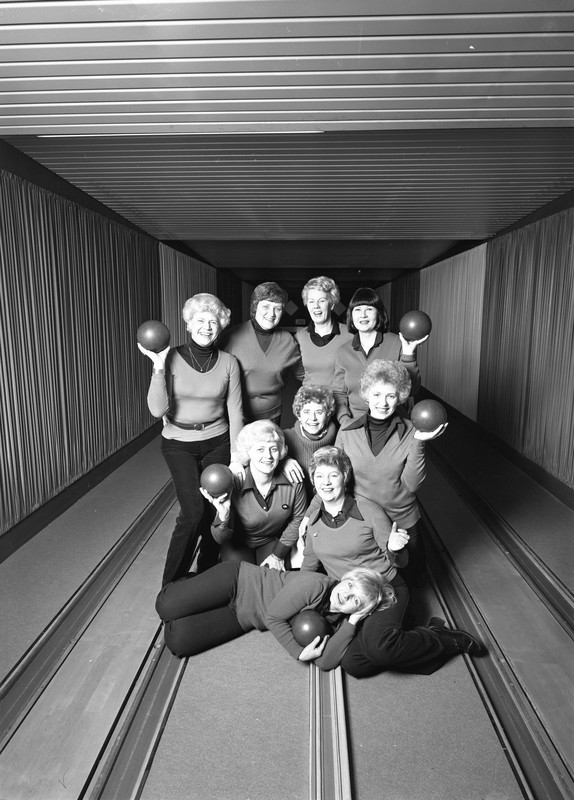“Man becomes the self in the group; without the group, the individual would have no resonance, no sphere of influence and no historical continuity.”
Inspired by the writings of psychoanalyst Raymond Battegay, Joachim Giesel created the series Der Mensch in der Gruppe [Man in the Group] between 1970 and 1979, which consists of over 100 group-portraits. He was interested in both: individual and social characteristics, that bring people together in a group – be it profession, faith or hobbies, but also sexual orientation or social stigmatization. In addition to a group of coffin bearer, assembly line workers, photo models, butchers and dock workers, the series also includes a nudist and a weight-watcher group. Giesel’s staging of place, attribute and costume transforms the individual into a “person in a group“.
The photographs are usually taken as part of commissioned or private appointments, where Giesel depicts people in a typical context: Drudge belt workers in the factory and dock workers at the harbor. They are staged in precise compositions, even if the photographer himself emphasizes that his photographs are not staged. His group portraits are both a socio-photographic documentation and a sociological study of West German society in the 1970s. For example, the photographs of a travesty group or of homosexuals document Giesel’s examination of groups on the margins of society.
Giesel consciously follows in the tradition of August Sander. His iconic long-term documentation brings together “People of the 20th Century” in 45 portfolios into seven groups that describe a social cross-section of the Weimar Republic, as it were: The Farmer, The Craftsman, The Woman, The Estates, The Artist, The Metropolis and The Last People. Sander photographed “not people, but types. People who represent their class, their status, their caste to such an extent that the individual can be taken for the group,” said Kurt Tucholsky in 1930.
In Giesel’s series Man in the Group the focus is not on people’s membership of a “class” or “caste”, but on people as social beings. More than in any other series, it is clear that people are the central motif in Giesel’s oeuvre.
“I am interested in the common, random externalities that demonstrate group affiliation. […] It is my intention to show the viewer the position of the individual in the group, their special character traits, temperaments, life circumstances, inclinations and abilities and to discuss the motives for belonging to the group.”
